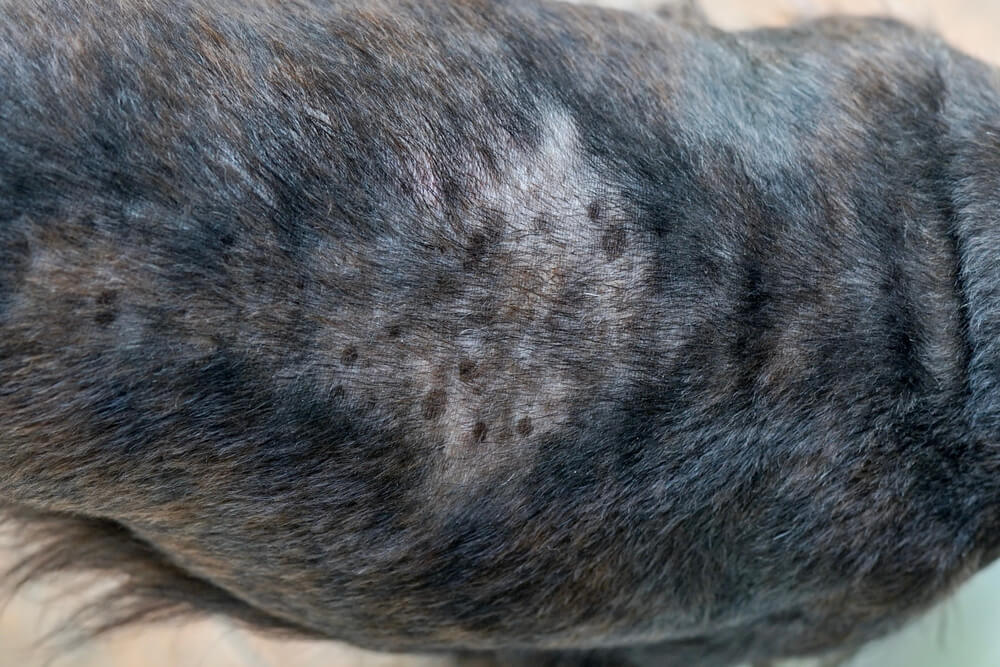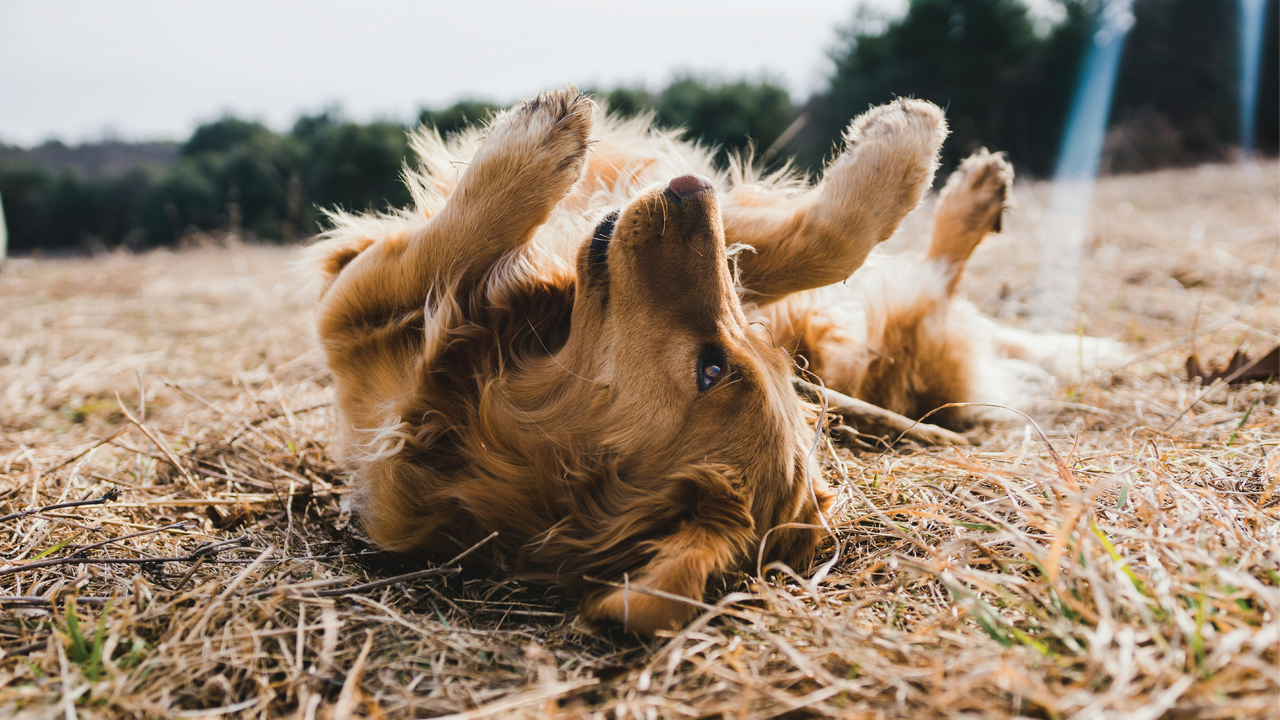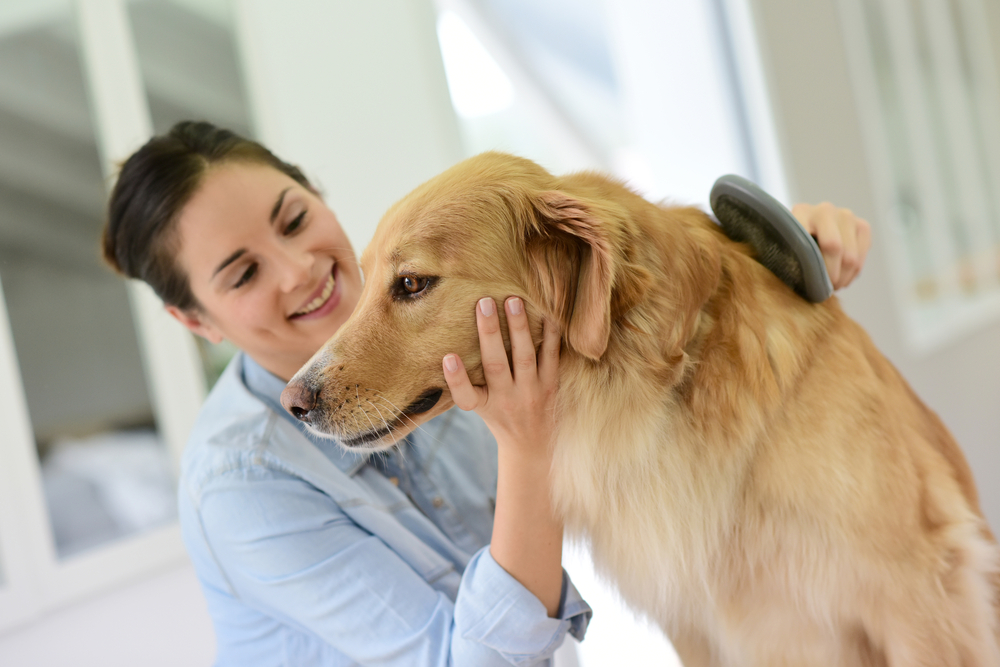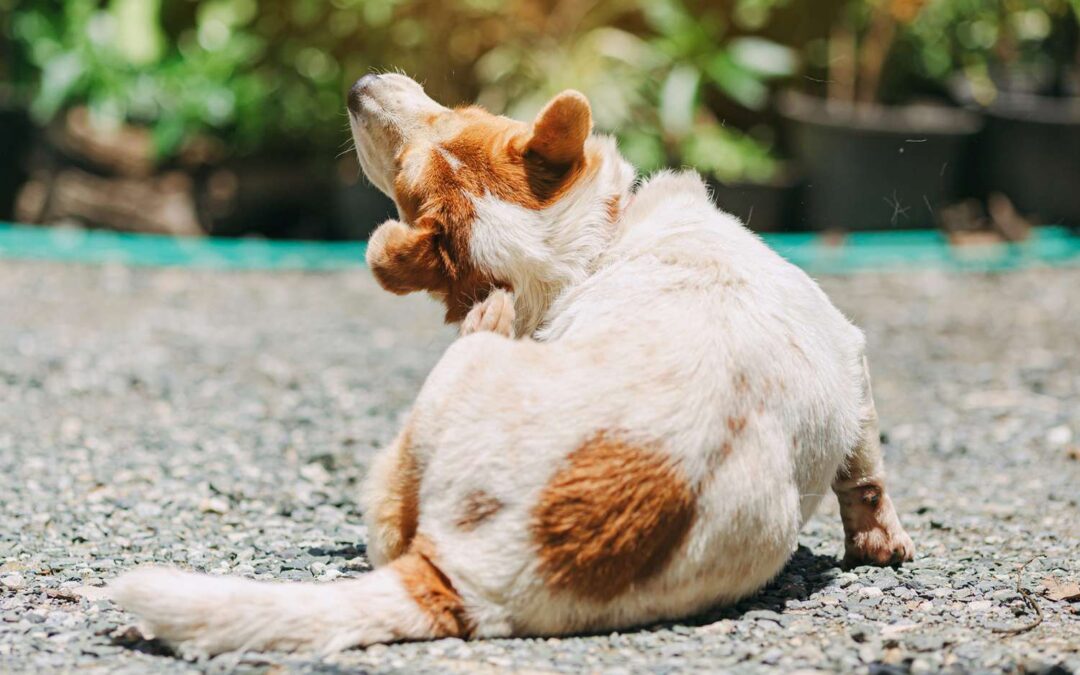I know how much we love seeing our dogs happy and healthy. So when I spot those tiny white flakes on my pup’s fur or bedding it’s hard not to worry. Dog dandruff might seem like a small issue but it can actually tell us a lot about our pet’s overall health.
I’ve learned that understanding the causes and signs of dog dandruff helps me keep my furry friend comfortable and itch-free. Whether it’s just a dry spell or something more serious I want to make sure my dog feels his best every day.
What Is Dog Dandruff?

What-Is-Dog-Dandruff
Dog dandruff refers to the white or flaky skin particles that appear in a dog’s coat. I see dandruff as visible flakes, often around the back, tail, or head, where dogs like Labradors, Beagles, and German Shepherds tend to have more sebaceous glands. These flakes form when my dog’s skin undergoes excess shedding or experiences dryness.
Dandruff in dogs appears as:
- Flaky white or yellowish specks on fur
- Sometimes greasy patches formed by excess oil
- Itching or scratching in affected areas
I recognize dandruff as a mild sign or a symptom linked to skin dryness, seborrhea, or external stressors like environmental changes. While mild cases show only flakes, more significant skin issues can include redness or irritation.
Key Characteristics of Dog Dandruff
| Feature | Description | Example Breeds |
|---|---|---|
| Flake Appearance | White or yellow, small, visible to the naked eye | Pugs, Labradors |
| Affected Area | Back, head, tail base | Spaniels, Beagles |
| Accompanying Signs | Mild itchiness, dry skin patches | Retrievers, Bulldogs |
| Consistency | Dry or oily, sometimes gathers in clumps | Huskies, Terriers |
| Shedding Pattern | Often seasonal, can intensify with stress or allergy | German Shepherds, Shih Tzus |
Common Causes of Dog Dandruff

Common-Causes-of-Dog-Dandruff
Dog dandruff most often stems from a combination of environmental factors and underlying health issues. I track specific causes to identify and address the source of my dog’s skin flakes.
Environmental Factors
Environmental factors create dry, flaky skin in dogs, especially when conditions lack proper moisture or balance.
- Dry Air: Homes using forced-air heating or experiencing low winter humidity typically create dry air. I notice dandruff flare-ups during colder months when the air inside feels less humid.
- Frequent Bathing or Grooming: Over-bathing or using harsh shampoos strips my dog’s natural oils, which leads to dry, flaky skin. Grooming too often irritates skin and encourages dandruff.
- External Parasites: Cheyletiella mites, also called “walking dandruff”, appear as visible moving flakes. These parasites demand veterinary intervention since they cause intense itchiness and flaking.
| Environmental Cause | Impact Observed | Example Breeds |
|---|---|---|
| Dry air | Increased skin flaking during winter or indoors | All breeds |
| Over-bathing/grooming | Dull coat, dryness after frequent washes | Poodles, Retrievers |
| Cheyletiella mites | Visible flakes, intense scratching | Any breed, often puppies |
Underlying Health Issues
Underlying health issues often result in chronic dandruff, requiring targeted management beyond environmental changes.
- Skin Allergies: Allergies to food or environmental substances like pollen or dust mites prompt inflammation. My dog often itches and develops flaky skin when exposed to certain allergens.
- Nutritional Imbalances: Diets with insufficient omega-3, omega-6, or vitamin A contribute to poor skin health. I choose nutritionally balanced food to avoid these problems.
- Hormonal Conditions: Disorders like hypothyroidism impact the skin’s oil production. Dandruff, paired with other symptoms such as lethargy, signals possible hormonal issues.
- Skin Infections: Bacterial or yeast infections thrive when the skin’s natural barrier weakens, resulting in irritation plus dandruff.
- Genetic Conditions: Some breeds—especially Basset Hounds, Cocker Spaniels, and West Highland White Terriers—commonly inherit primary seborrhea that causes ongoing dandruff.
| Health Issue | Key Signs | Susceptible Breeds |
|---|---|---|
| Allergies | Flaking, itching, recurrent infections | Bulldogs, Golden Retrievers |
| Nutritional deficits | Dull coat, persistent dandruff | All breeds; higher risk for growing dogs |
| Hormonal imbalances | Dandruff, low energy, hair thinning | Labradors, Dachshunds |
| Skin infections | Scaly skin, irritation | Breeds with skin folds (Shar Peis) |
| Genetic seborrhea | Chronic flakes, oily or dry skin patches | Basset Hounds, Cocker Spaniels, WHWTs |
Dog dandruff links to both immediate environmental changes and complex health concerns. I address these factors based on signs, breed predispositions, and visible skin symptoms.
Recognizing the Symptoms of Dog Dandruff

Recognizing-the-Symptoms-of-Dog-Dandruff
Spotting dog dandruff starts with observing visible white flakes in my dog’s fur, especially along the back, tail base, and near the head. These flakes usually resemble dry skin particles but sometimes appear greasy or yellowish, depending on other skin conditions.
Itching and scratching mark another sign, as I notice my dog licking, chewing, or rubbing affected spots. Red, irritated skin patches may emerge near the flaking, showing up as small inflamed areas. Some sections may lose hair (alopecia), especially if the dog keeps scratching the same spot.
Oily skin combined with an unpleasant odor sometimes indicates an underlying infection, making the flakes stickier or clumpier. In a few instances, I’ll see scabs, crusts, or raw spots, hinting that the itching led to secondary infections or open sores.
When symptoms appear only in certain spots, it typically points to a local reaction, like contact allergies or parasites. Persistent or recurring symptoms often link to chronic health conditions that need a veterinarian’s diagnosis.
Common Symptoms and Descriptions
| Symptom | Description | Example |
|---|---|---|
| White flakes | Dry, flaky dead skin particles on the fur | Visible on back or tail |
| Frequent scratching | Recurrent itching, biting, or licking of skin | Dog chews at itchy spots |
| Red, irritated patches | Inflamed or sensitive areas of skin | Redness near flaking |
| Hair loss (alopecia) | Patches of fur missing in affected areas | Bald spots on skin |
| Oily or smelly skin | Greasy or odorous build-up, sometimes with flakes | Clumping, strong odor |
| Scabs or open sores | Areas where skin is broken or crusted | Raw patches |
Visual vs. Behavioral Indicators
| Indicator Type | Specific Signs |
|---|---|
| Visual | Flakes, redness, bald patches, oily sheen, scabs |
| Behavioral | Excessive scratching, licking, chewing, restlessness |
Recognizing these symptoms depends on observing both the appearance of my dog’s skin and changes in its grooming or behavior. When I see these signs together or worsening, contacting a veterinarian helps determine if my dog’s dandruff is due to minor dryness or a more serious issue requiring treatment.
Effective Treatment Options for Dog Dandruff
Managing dog dandruff means combining targeted topical care, nutritional strategies, and regular grooming. I address the root causes and tailor treatments by identifying visible flakes, irritation, and underlying factors.
Topical Solutions and Shampoos
Specialized dog shampoos deliver hydration and relief. I use moisturizing formulas with oatmeal or aloe vera for mild flakiness, which soothe skin and reduce irritation. Prescription shampoos often target allergies or parasitic infestations when standard products aren’t enough. Regular brushing—at least 2-3 times per week—removes flakes and spreads natural oils. For dogs affected by mites or parasites, I follow veterinary guidance and incorporate medicated baths, insecticide rinses, or oral treatments. I also clean the bedding and living spaces to stop reinfestation.
Table: Common Topical Treatments for Dog Dandruff
| Product Type | Common Ingredients | Primary Benefit | Usage Frequency |
|---|---|---|---|
| Moisturizing Shampoos | Oatmeal, Aloe Vera | Hydrate, Reduce Flaking | Weekly |
| Prescription Shampoos | Antifungals | Treat Underlying Issues | As prescribed |
| Medicated Sprays | Chlorhexidine | Manage Infection & Itch | As directed |
Dietary Changes and Supplements
Nutritional support significantly lowers dandruff risk. I increase omega-3 fatty acids by choosing high-quality foods with fish oil or flaxseed and add supplements when recommended by a veterinarian. Zinc supplementation supports skin repair in some dogs. I review ingredient lists and consider controlled feeding trials for pets with possible food allergies or nutrient imbalances. For persistent dandruff, I consult a veterinarian before switching diets or adding new supplements.
Table: Dietary Additions for Allergic or Nutritional Dandruff
| Dietary Component | Example Sources | Primary Benefit |
|---|---|---|
| Omega-3 Fatty Acids | Salmon, Flaxseed Oil | Improves Skin Hydration |
| Zinc Supplements | Veterinary Formulas | Promotes Skin Repair |
| Whole Foods | Fresh Meat, Vegetables | Fewer Allergens, Balanced |
Nutritional and topical strategies work best when I observe my dog’s response and continually consult veterinary advice for persistent or worsening cases.
Preventing Dog Dandruff
Preventing dog dandruff involves a consistent routine of grooming, balanced nutrition, hydration, and environmental care. I focus my approach on several evidence-based strategies to keep my dog’s skin healthy and flake-free.
Regular Brushing
Brushing my dog daily or every other day removes dead skin flakes and distributes natural oils that maintain coat health. I choose a brush that matches my dog’s coat type, whether that’s a slicker for my Labrador or a bristle brush for my Beagle, which avoids skin irritation and matting.
Proper Bathing Techniques
Bathing my dog every 4 to 8 weeks with a moisturizing or anti-dandruff shampoo made for dogs helps avoid dryness. I always skip human shampoos, since these disrupt my dog’s natural skin pH. I dry my dog thoroughly after bathing to prevent skin infections.
Oatmeal Baths
Oatmeal baths provide relief from itchiness and help hydrate dry, flaky skin. I either use over-the-counter oatmeal shampoos or prepare a bath with uncooked oatmeal and baking soda mixed with lukewarm water for my dog.
Hydration
Constant access to clean water is essential for my dog’s skin moisture. I boost hydration by adding wet dog foods or water-rich treats like cucumber and carrots to meals.
Nutrition
I select high-quality dog foods that list meat as the first ingredient and contain essential fatty acids like omega-3 and omega-6. Adding a veterinarian-recommended fish oil supplement or skin-supporting chew can help improve skin barrier function and reduce flakes.
Environmental Care
Running a humidifier, especially during dry winter months, keeps indoor air around 40–60% humidity, which helps prevent my dog’s skin from drying out and flaking.
Parasite and Allergen Protection
I use veterinarian-recommended flea, tick, and mite preventatives. Monitoring for new allergens, such as seasonal pollen or diet changes, helps me identify dandruff triggers quickly.
Topical Moisturizers
Applying coconut oil or dog-safe moisturizer under veterinary guidance adds an extra layer of protection for dry or flaky skin spots.
Table 1: Key Dog Dandruff Prevention Methods
| Method | Frequency/Timing | Example Technique or Product |
|---|---|---|
| Brushing | Daily/EOD | Slicker brush, bristle brush |
| Bathing | Every 4–8 weeks | Moisturizing dog shampoo, oatmeal shampoo |
| Oatmeal Baths | As needed | Ground oatmeal, baking soda |
| Hydration | Ongoing, daily | Clean water, wet food, cucumber, carrots |
| Nutrition | Ongoing, daily | Omega-3 supplement, fish oil, quality kibble |
| Environmental Care | Winter/dry seasons | Humidifier use |
| Parasite Prevention | Monthly/seasonal | Flea/tick preventatives, vet supervision |
| Topical Moisturizers | As needed/vet OK | Coconut oil, dog-specific spray |
Table 2: Dandruff Prevention Nutrient Sources
| Nutrient | Example Food or Supplement | Benefit to Skin |
|---|---|---|
| Omega-3 | Fish oil, salmon, sardines | Reduces inflammation |
| Omega-6 | Chicken fat, sunflower oil | Maintains moisture |
| Zinc | Pumpkin seeds, beef, commercial chews | Supports skin repair |
| Vitamin E | Eggs, spinach, dog supplements | Antioxidant protection |
If I notice my dog’s dandruff persists or worsens despite these measures, especially if accompanied by irritation or hair loss, I consult my veterinarian for further diagnostic assessment. My consistent care, grooming, and nutritional vigilance keep my dog’s skin and coat in optimal condition while minimizing risk of dandruff recurrence.
When to Consult a Veterinarian
I contact my veterinarian when my dog’s dandruff persists or worsens even if I’ve adjusted grooming or diet routines. Persistent flakes suggest deeper skin problems. If my dog shows discomfort signs—like constant scratching, inflamed or red skin, hair loss, scabs, sores, or a sudden change in appetite or behavior—I seek professional evaluation.
For cases where symptoms point to allergies, infections, hormonal imbalances, or immune-related conditions, only a veterinarian can diagnose and address these underlying causes. Sudden or severe dandruff, especially with smelly skin or open wounds, needs quick intervention to prevent complications.
Veterinarians confirm diagnosis through examinations and specialized tests, including skin scrapings, blood work, allergy panels, or biopsies. Early action ensures my dog’s comfort and prevents serious health issues.
Signs That Warrant a Veterinary Visit
| Symptom | Example | Why it Matters |
|---|---|---|
| Persistent dandruff | Flakes remain after moisturizing shampoo use | Indicates possible chronic issue |
| Excessive scratching | Dog chews or bites skin | Suggests discomfort or allergies |
| Inflamed, red, or smelly skin | Area around tail smells or looks swollen | May signal infection or dermatitis |
| Hair loss or bald patches | Noticeable thinning around flanks or legs | Could mean mites or hormonal issue |
| Open sores or scabs | Visible wounds or scabby skin | Increases infection risk |
| Behavior changes | Less playful, poor appetite | May reflect pain or systemic illness |
Common Underlying Conditions Diagnosed by Vets
| Condition | Diagnostic Methods |
|---|---|
| Skin or food allergies | Allergy testing, skin scrapings |
| Infections | Blood tests, cultures |
| Hormone imbalances | Thyroid or adrenal hormone tests |
| Nutritional deficiencies | Blood analysis, diet assessment |
| Parasite infestations | Mite identification, fecal tests |
Immediate, well-timed veterinary consultation links proper care to the long-term health of dogs with persistent or complicated dandruff.
Conclusion
Caring for my dog’s skin health is an important part of keeping them happy and comfortable. By staying attentive to changes in their coat and skin and maintaining a consistent grooming and nutrition routine I can help prevent dandruff from becoming a bigger problem.
If I ever notice persistent flakes or other concerning symptoms I know it’s best to reach out to my veterinarian. Taking these steps ensures my dog stays healthy and enjoys life itch-free.
Frequently Asked Questions
What is dog dandruff?
Dog dandruff refers to white or flaky skin particles visible in a dog’s fur, commonly around the back, tail, or head. It occurs when the dog’s skin becomes dry or sheds excessively.
What causes dandruff in dogs?
Dandruff in dogs can be caused by dry air, frequent bathing or grooming, external parasites, allergies, nutritional imbalances, skin infections, genetic factors, or underlying health conditions.
What are the symptoms of dog dandruff?
Symptoms include visible white flakes, itching, scratching, red or irritated skin patches, hair loss, oily or smelly skin, scabs, and sometimes open sores.
How can I treat my dog’s dandruff at home?
Treat dog dandruff at home by using moisturizing shampoos (like oatmeal or aloe vera), brushing regularly to distribute natural oils, ensuring a balanced diet rich in omega-3 fatty acids, and keeping your dog well-hydrated.
When should I take my dog to the vet for dandruff?
Consult a veterinarian if your dog’s dandruff persists, gets worse, or comes with severe itching, hair loss, smelly skin, open sores, or changes in behavior.
Can diet help prevent dog dandruff?
Yes, providing a well-balanced diet with plenty of omega-3 fatty acids and zinc can promote healthy skin and help prevent dandruff in dogs.
Are certain dog breeds more prone to dandruff?
Yes, breeds like Labradors, Beagles, and German Shepherds may be more prone to dandruff due to their skin and coat types.
Can parasites cause dandruff in dogs?
Yes, parasites such as Cheyletiella mites can cause skin irritation and dandruff in dogs. These require specific veterinary treatment.
How often should I bathe my dog to prevent dandruff?
Bathe your dog every few weeks using a moisturizing or hypoallergenic shampoo. Avoid over-bathing as it can dry out your dog’s skin and worsen dandruff.
What preventive care can reduce dog dandruff?
Maintain a regular grooming routine, feed high-quality food rich in fatty acids, keep your dog hydrated, use pet-safe humidifiers during dry seasons, and apply veterinarian-recommended parasite preventatives.

